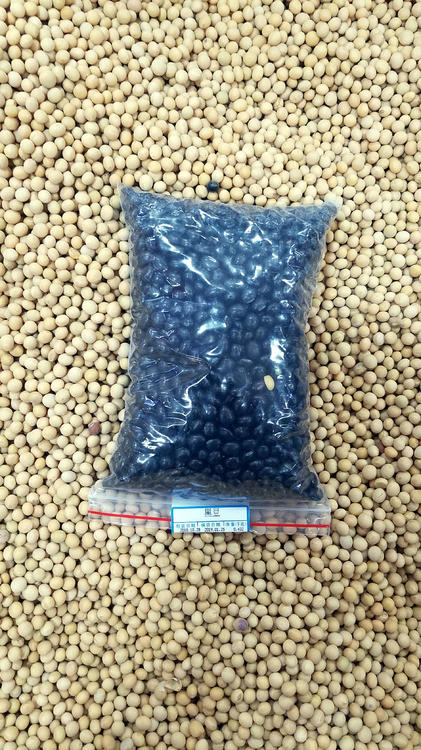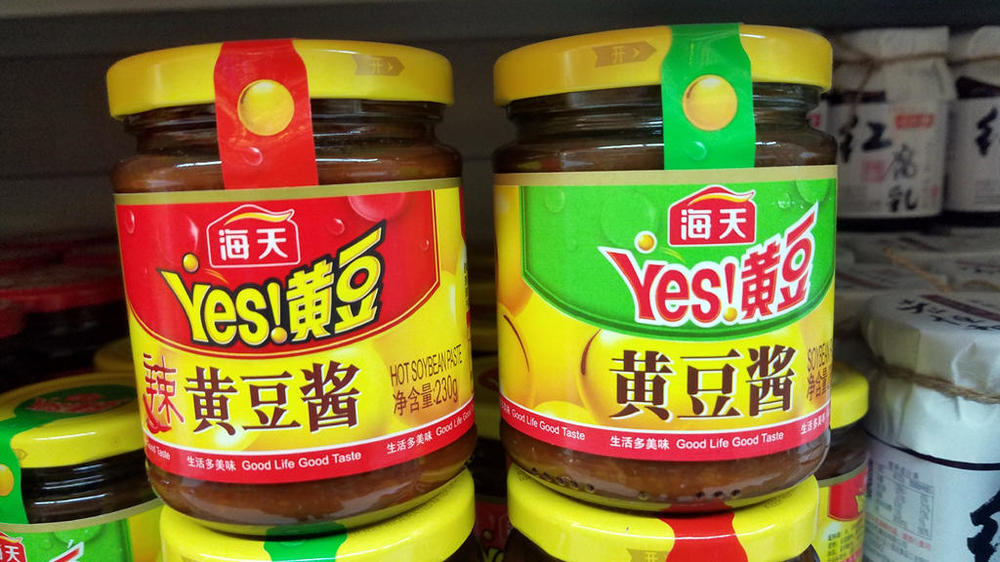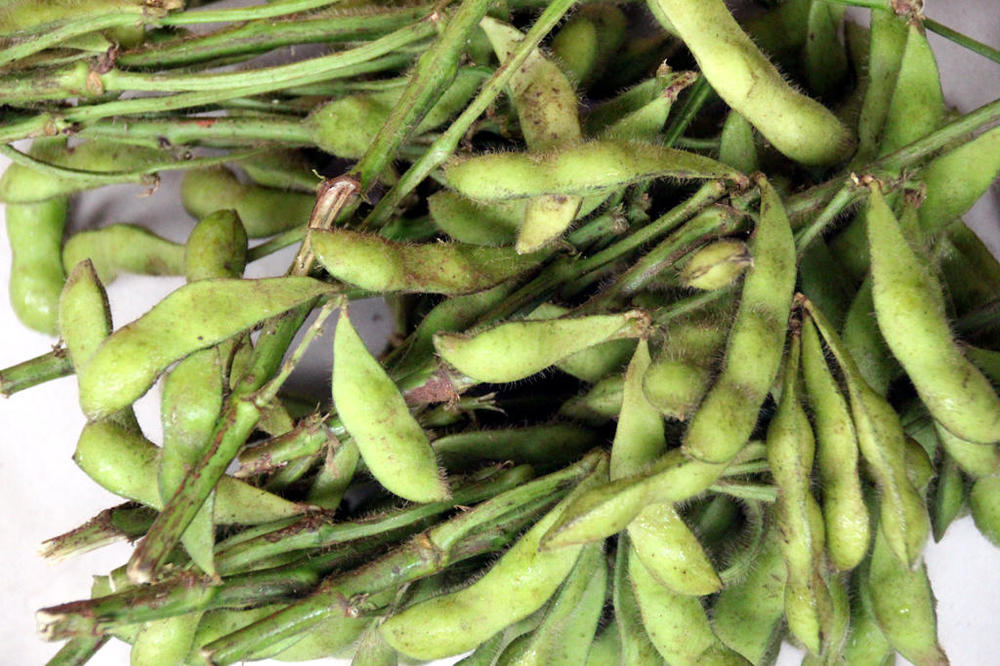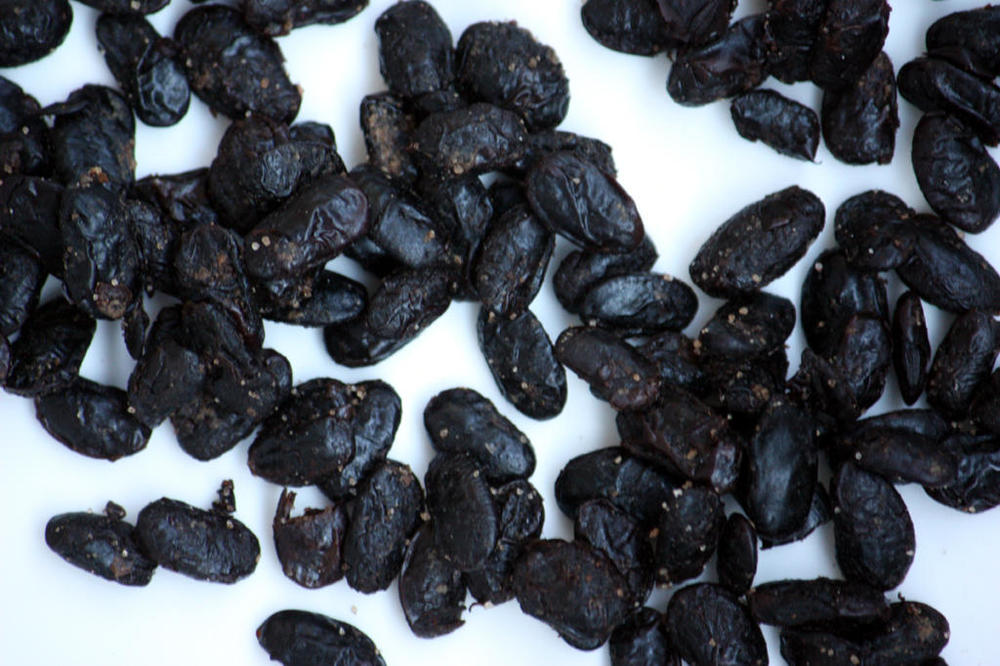Glycine max
I can't really mention China and beans without mentioning soy, or soya beans. In Chinese 黄豆 (Mand: huáng dòu; Cant: wong4 dau6), yellow beans or 大豆 (Mand: dà dòu; Cant: daai6 dau6*2), large beans.
regular and black soy beans
Most of China's own production, and the huge amount they import, goes into soy cooking oil - 大豆油 (Mand: dà dòu yóu; Cant: daai6 dau6*2 jau4), tofu - 豆腐 (Mand: dòu fǔ; Cant: dau6 fu6); soy sauce - Mand: 酱油 (jiàng yóu); Cant: 豉油 (si6 jau4/4*2), etc. A large amount also goes to livestock feed.
Soy Bean Paste (L: Spicy R: Regular)
However, there are some uses as vegetables.
毛豆 (Mand: máo dòu; Cant: mou4 dau6*2), literally 'hairy' or 'furry beans' are the immature bean pods, which many know as 枝豆 edamame, the Japanese name.
raw
cooked
Also available are soy bean sprouts - 大豆牙 (Mand: dà dòu yá; Cant: daai6 dau6*2 ngaa4), raised and used just as any other bean sprout.
There is also a black strain of soy bean, 黑豆 (Mand: hēi dòu; Cant: hak1 dau6*2). These are salted and fermented to make 豆豉 (Mand: dòu chǐ; Cant: dau6 si6), fermented black beans as used in many dishes.
Note that bottled black bean sauce is not available in any stores here; people make their own using the beans directly in the wok as they cook the dish.







